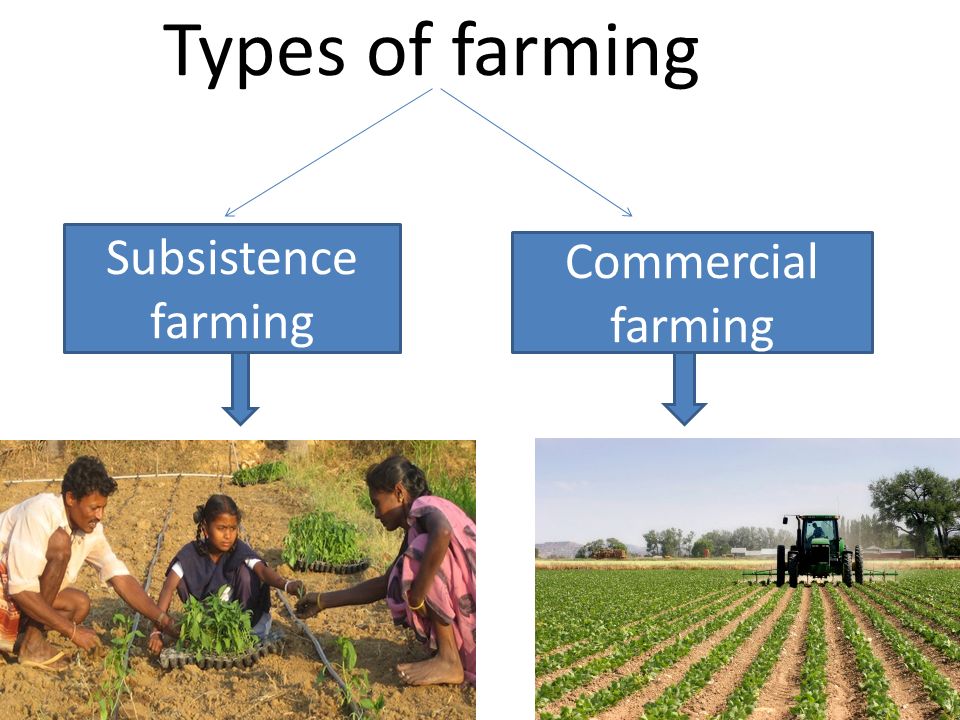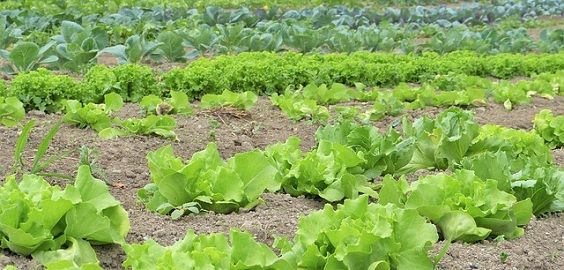The Function of Technology in Commercial Farming vs Subsistence Farming Approaches
The Function of Technology in Commercial Farming vs Subsistence Farming Approaches
Blog Article
A Comprehensive Take A Look At the Difficulties and Advantages of Modern Agriculture
Modern farming stands at the crossroads of development and sustainability, presenting a wide variety of obstacles and chances. With improvements like accuracy farming and biotechnology encouraging enhanced productivity, the industry all at once grapples with crucial problems such as environmental degradation and socio-economic differences. As we discover the detailed equilibrium between technological development and its more comprehensive impacts, the concern develops: can we accomplish a sustainable future that benefits both the atmosphere and farming areas? The course onward demands a cautious assessment of these dynamics, welcoming stakeholders to take into consideration the potential for transformative modification in agricultural methods and plans.
Technical Advancements in Farming
Technologies such as accuracy agriculture, automation, and biotechnology have changed conventional farming methods, permitting for even more sustainable and successful procedures. Precision agriculture utilizes GPS technology, sensing units, and data analytics to maximize field-level administration relating to crop farming.
Automation in farming has further driven the market ahead, with the introduction of self-governing tractors, drones, and robotics. These technologies minimize labor demands and boost functional speed, enabling prompt planting and harvesting. Drones, specifically, offer valuable airborne images and data, aiding farmers in keeping track of crop wellness and discovering problems early.
Biotechnology has also played a pivotal role in progressing farming techniques. Genetically changed organisms (GMOs) have been created to boost crop resistance to bugs and diseases, reduce dependence on chemical treatments, and enhance nutritional content. This technology adds to food safety and security and fulfills the needs of a growing worldwide population. Jointly, these technological developments have laid the groundwork for a more sustainable and durable farming future.
Ecological Obstacles
Farming encounters numerous ecological difficulties that intimidate its sustainability and efficiency. Among the key worries is the deterioration of dirt health because of intensive farming techniques that deplete necessary nutrients and lead to disintegration. The overuse of chemical plant foods and pesticides even more worsens this issue, polluting water resources and reducing biodiversity. The lasting viability of farming land is endangered, requiring the fostering of more lasting techniques.
Water scarcity is another considerable obstacle, especially in regions where agriculture greatly relies upon watering. Climate change is heightening this problem, modifying precipitation patterns and boosting the frequency of droughts. Reliable water management systems, such as drip irrigation and rainwater harvesting, are important to alleviate these effects, yet their implementation continues to be uneven across different areas.
In addition, farming is both a target and a factor to environment adjustment. Attending to these environmental difficulties is crucial for guaranteeing a sustainable agricultural future.

Financial Impacts
The financial influences of contemporary farming are complex and profound, affecting both local and international markets. Breakthroughs in technology and production approaches have actually considerably enhanced farming productivity, bring about extra effective food supply chains and lowered costs for consumers. This heightened efficiency has actually made it possible for nations to satisfy growing demands, stabilize food rates, site link and contribute to economic growth. The export of farming commodities has actually ended up being a significant resource of revenue for many countries, playing a vital function in their financial development.
The capital-intensive nature of modern farming requires substantial financial investment in equipment, plant foods, and genetically customized seeds, which can be economically difficult for small-scale farmers. Additionally, worldwide market fluctuations can affect the success of agricultural exports, making economies reliant on agriculture at risk to economic instability.
Additionally, aids and trade plans in industrialized countries can here are the findings distort market costs, impacting affordable balance and possibly disadvantaging farmers in establishing nations. In general, while modern agriculture drives economic development, it additionally demands navigating intricate financial landscapes to make certain fair and sustainable advancement.
Social Effects
While contemporary farming has brought around substantial improvements, it likewise presents different social effects that necessitate factor to consider. One significant worry is the variation of small farmers as a result of the surge of huge agribusinesses. As corporate farming entities increasingly control the farming landscape, smaller ranches often struggle to contend, bring about the erosion of country neighborhoods and conventional farming practices. This shift can result in a loss of neighborhood expertise and cultural heritage that smaller sized ranches maintain.

Such practices might likewise limit consumer choices and reduce the capacity of local neighborhoods to manage their food resources. As these social effects unravel, it comes to be important to resolve them to make certain lasting and equitable agricultural development.
Future Directions
Looking ahead, a number of encouraging opportunities for modern farming could attend to the difficulties encountered today while cultivating lasting growth. Advances in modern technology, such as precision farming, provide the prospective to optimize source use and boost performance. By employing information analytics and machine understanding, farmers can make educated decisions regarding plant monitoring, causing decreased input costs and reduced environmental impact. Additionally, the combination of renewable energy sources right into farming techniques could considerably decrease dependency on fossil fuels and contribute to lower greenhouse gas exhausts.
Biotechnology likewise holds enormous guarantee for the see here now future of farming. Genetically customized organisms (GMOs) and genetics modifying techniques, like CRISPR, could improve crop durability versus climate adjustment, pests, and illness, thus boosting food safety. Additionally, diversifying crop ranges to include more climate-resilient and nutrient-dense choices might bolster both environmental security and human nourishment.

Final Thought
Modern farming, defined by technical improvements, offers both challenges and opportunities. While advancements such as precision farming and biotechnology boost efficiency and sustainability, they likewise add to ecological concerns like dirt degradation and water shortage. The economic impacts are considerable, leading and affecting small farmers to wider social implications. Addressing these complexities calls for a change in the direction of lasting techniques that balance efficiency with environmental stewardship and social equity, therefore making certain a durable future for worldwide agricultural systems.
Modern agriculture stands at the crossroads of technology and sustainability, providing a wide range of difficulties and chances. In addition, worldwide market changes can affect the earnings of farming exports, making economic climates reliant on farming prone to financial instability.
Moreover, the intensive use of modern technology and automation in agriculture has led to a reduction in farming work chances.Looking ahead, a number of encouraging opportunities for contemporary agriculture could address the challenges faced today while promoting lasting development. commercial farming vs subsistence farming.Modern agriculture, identified by technological innovations, presents both challenges and possibilities
Report this page